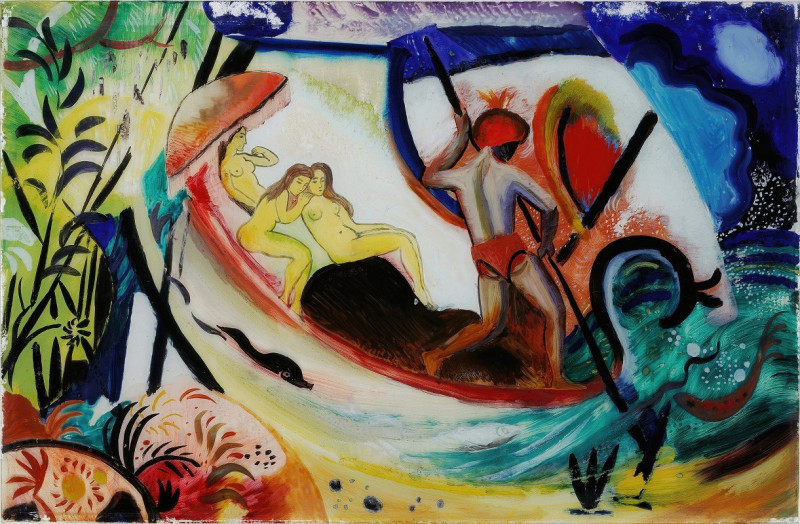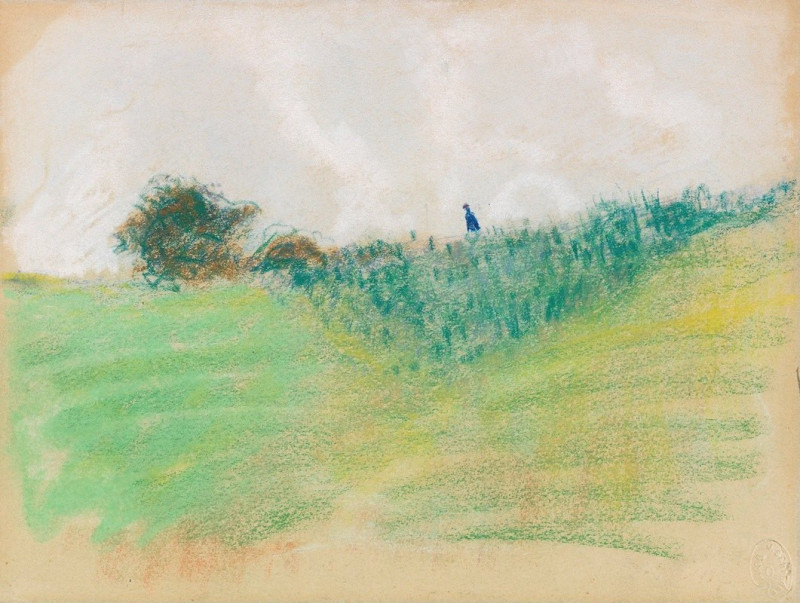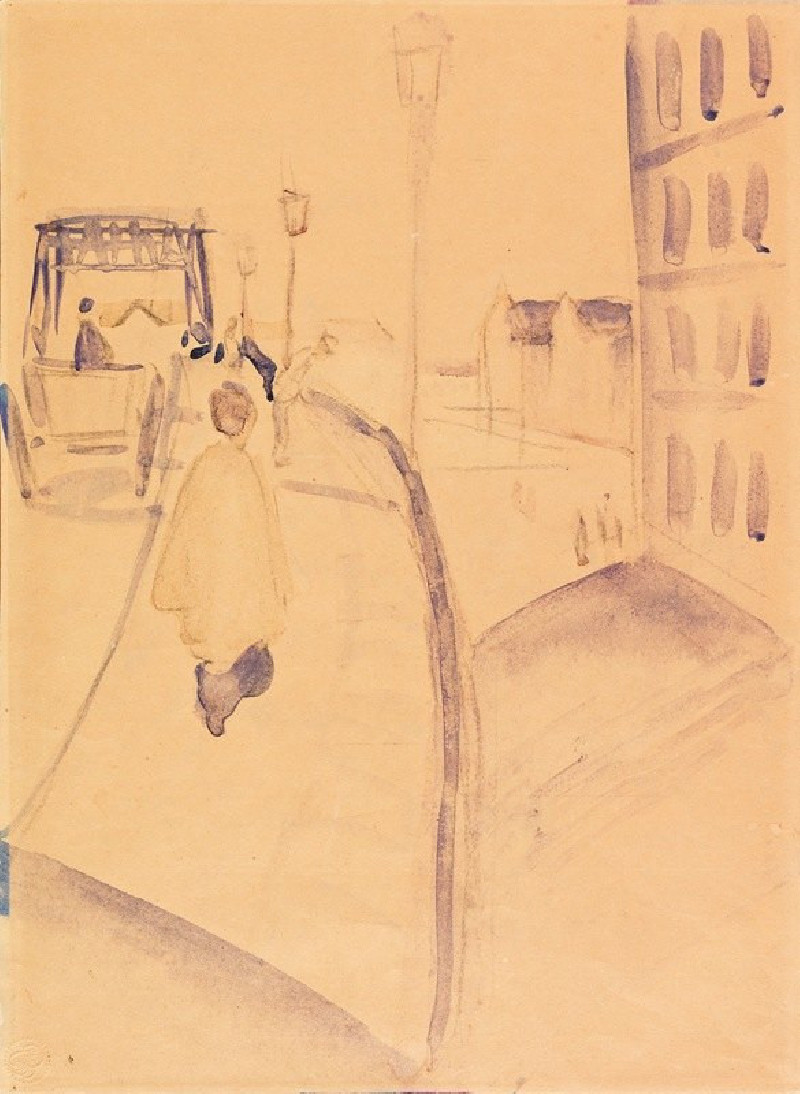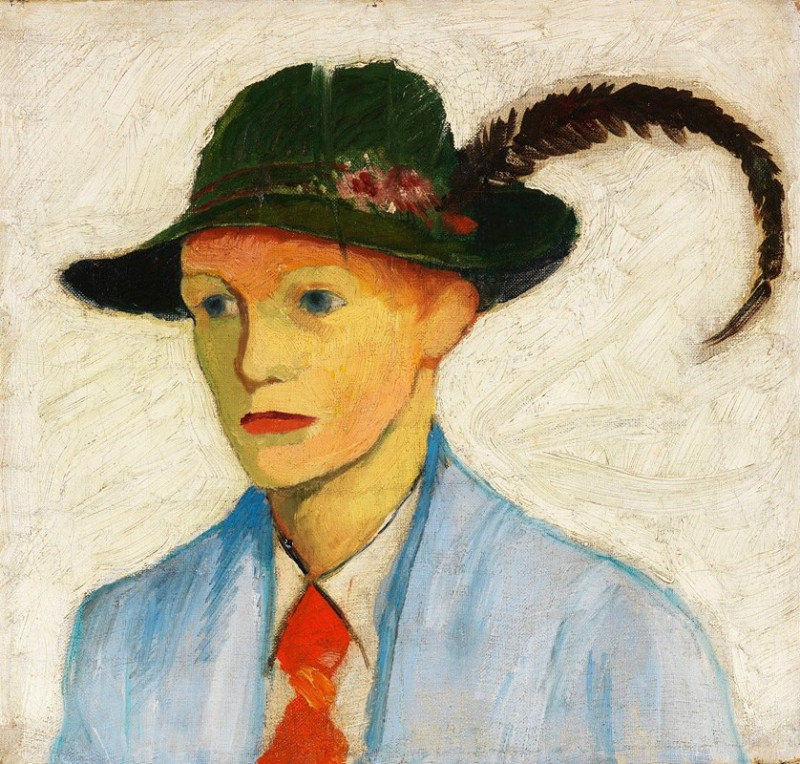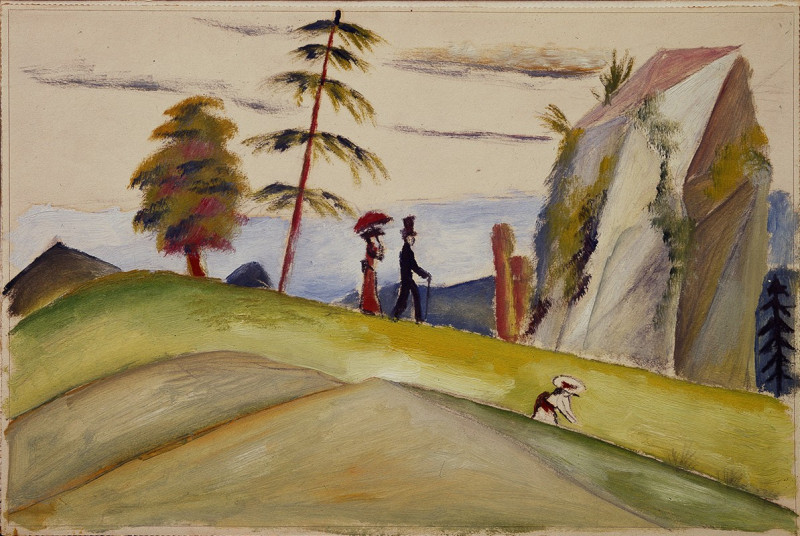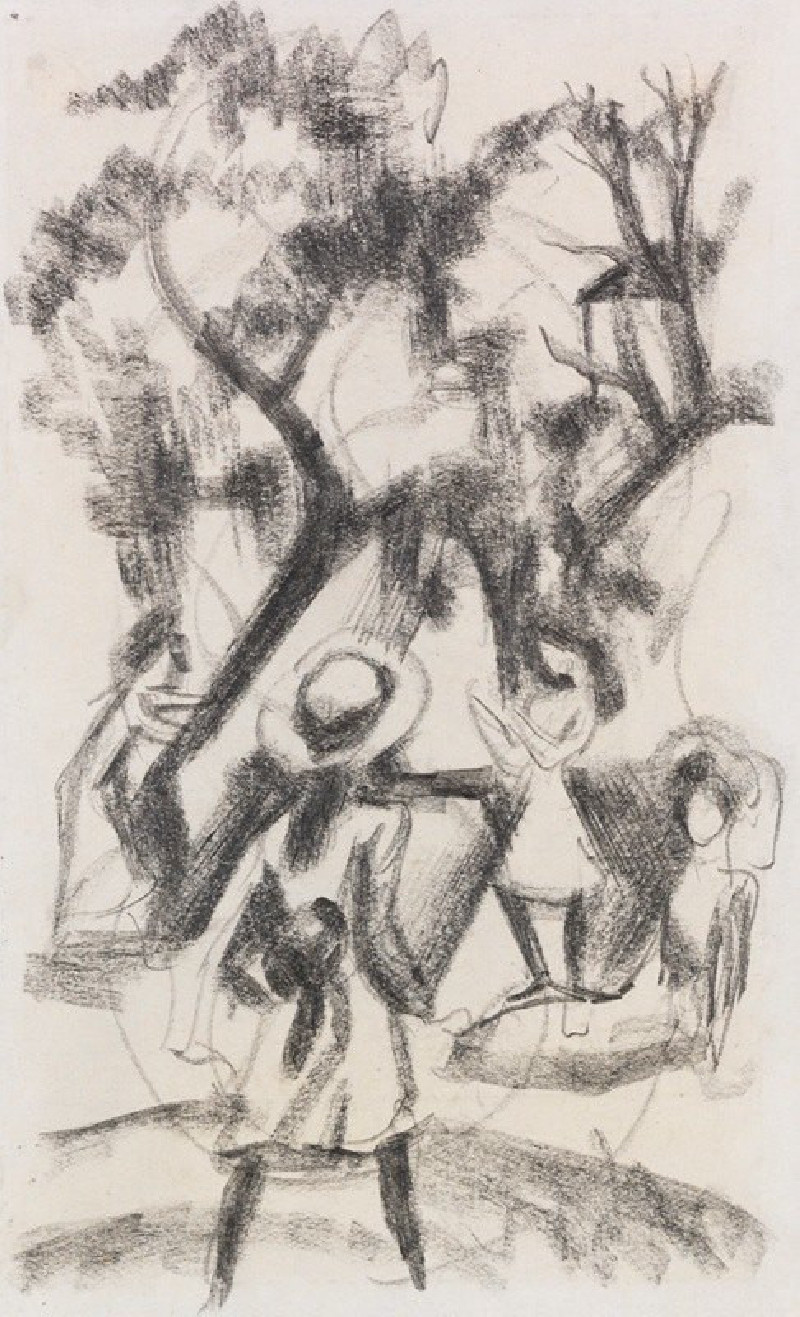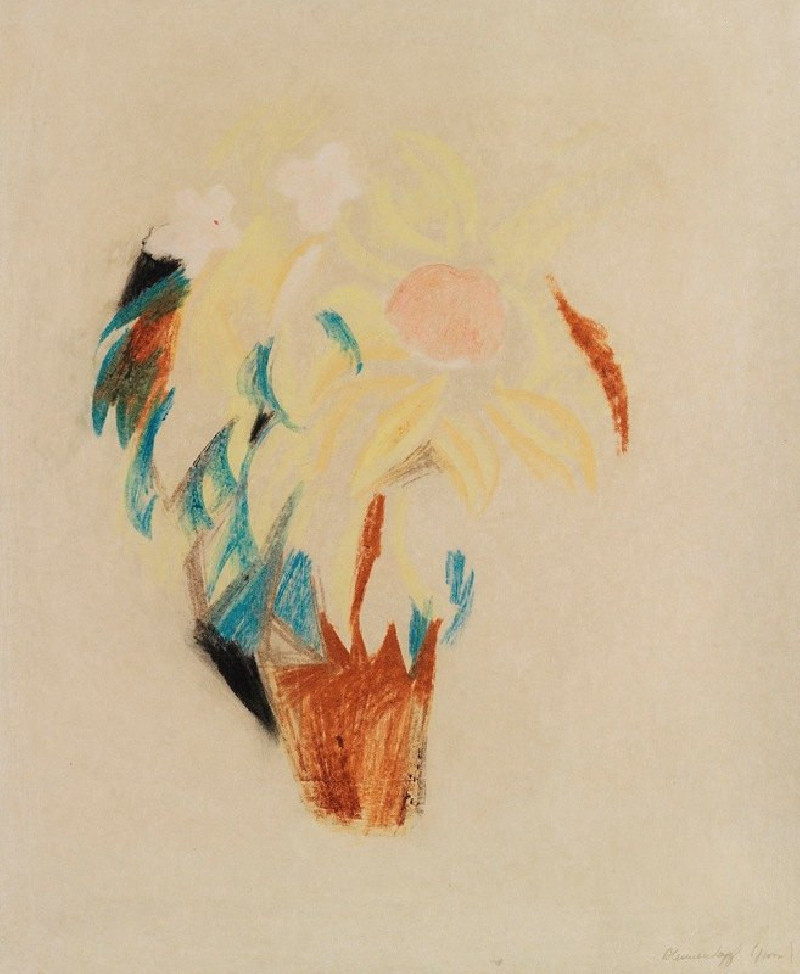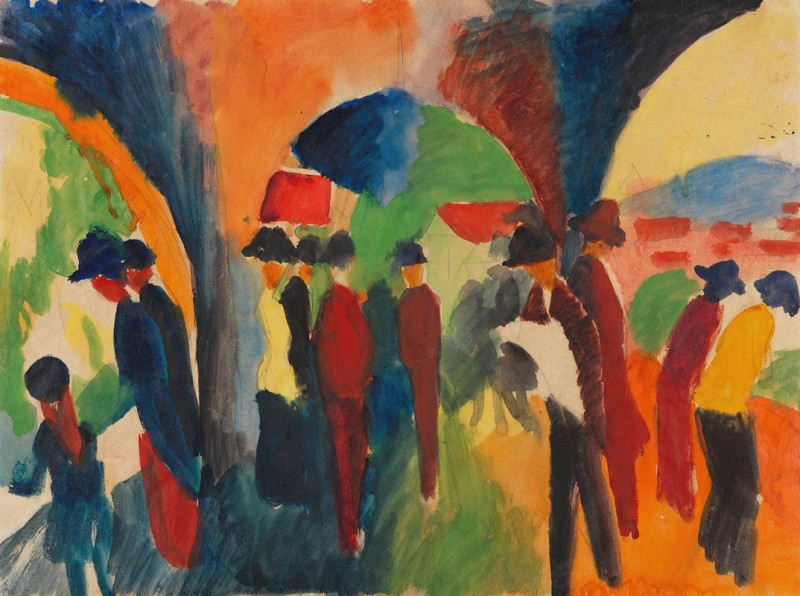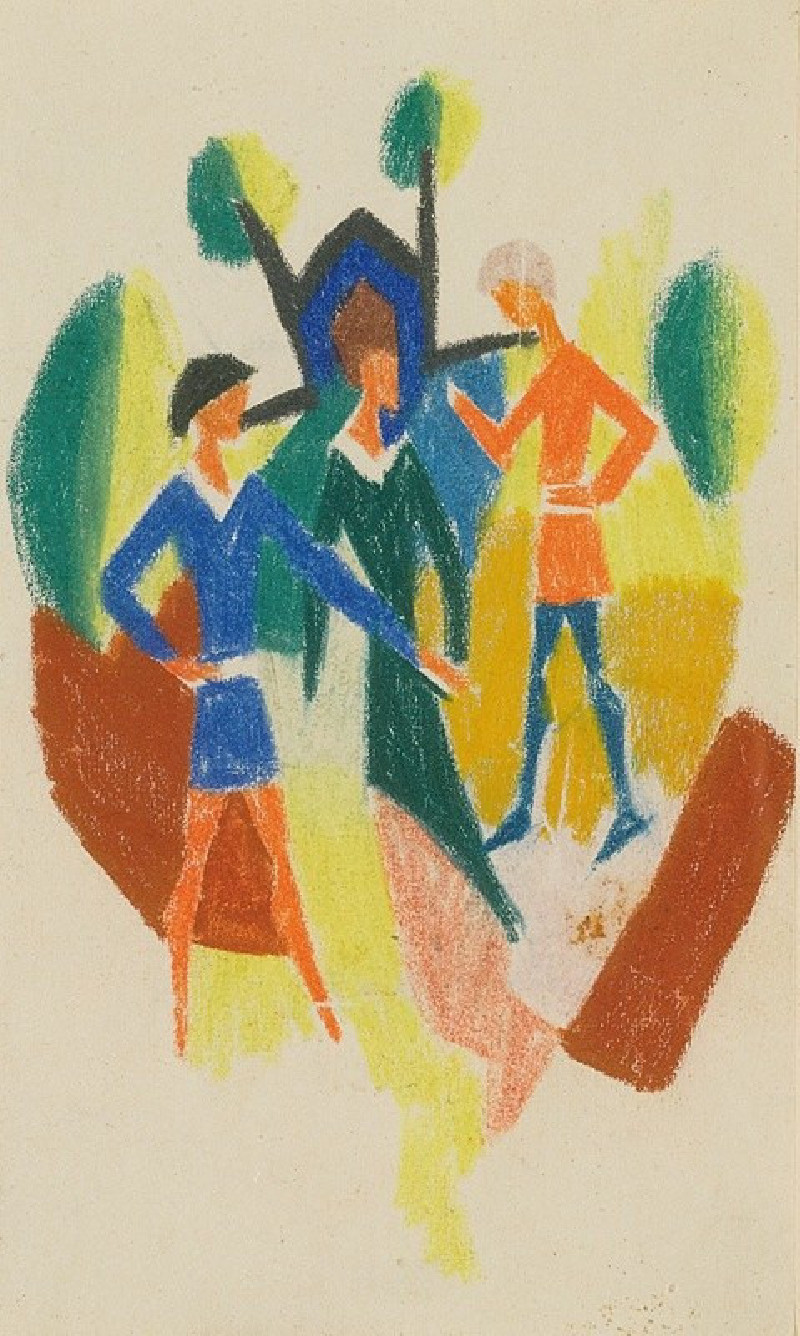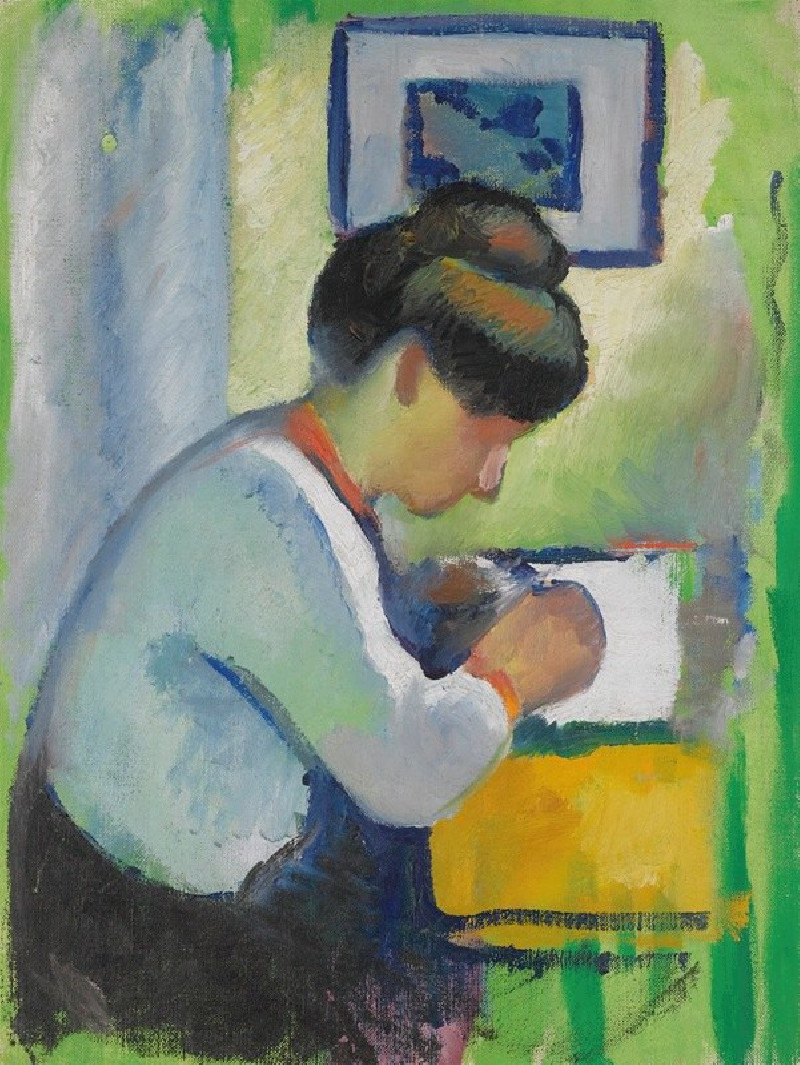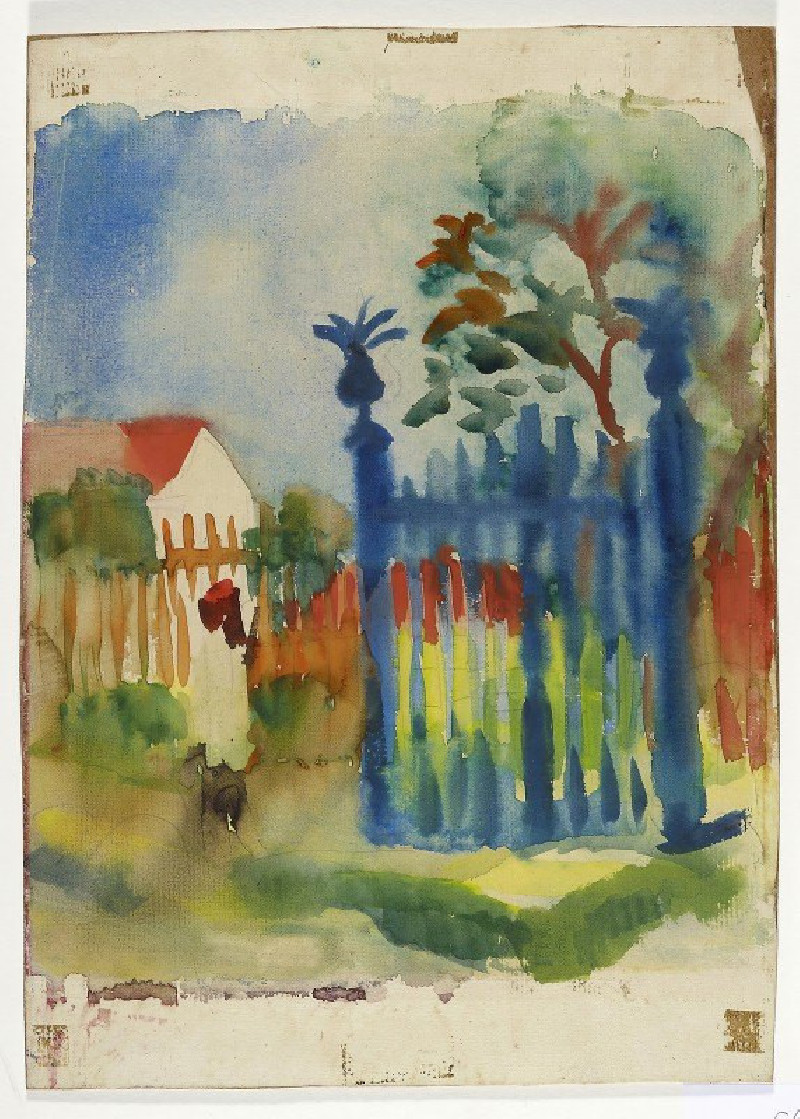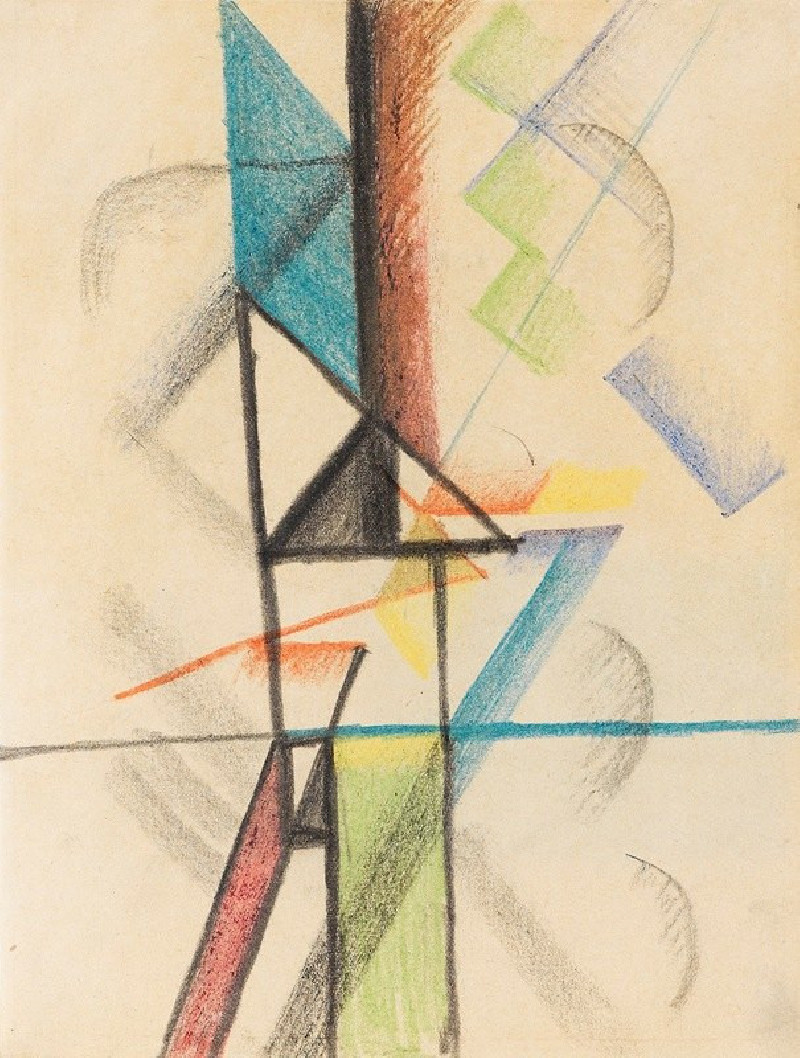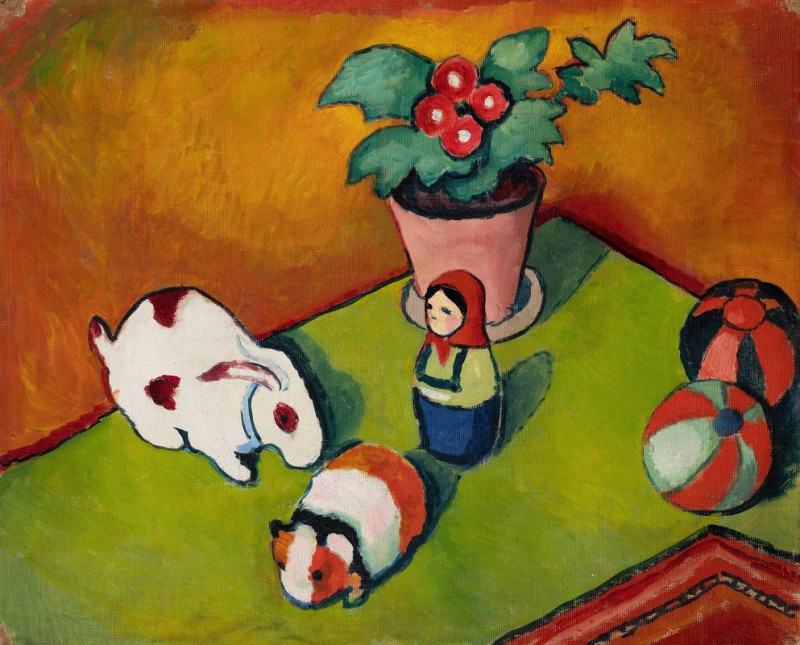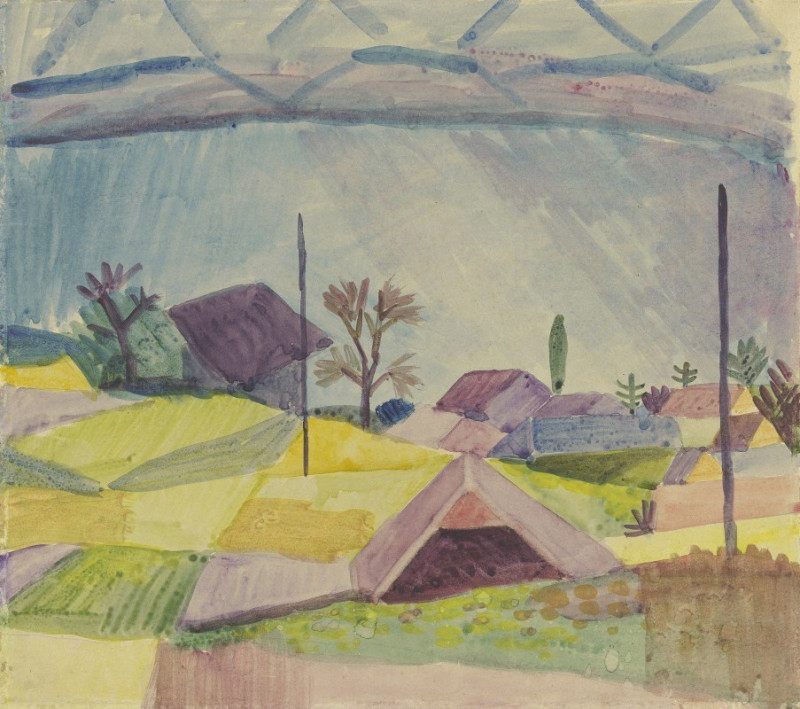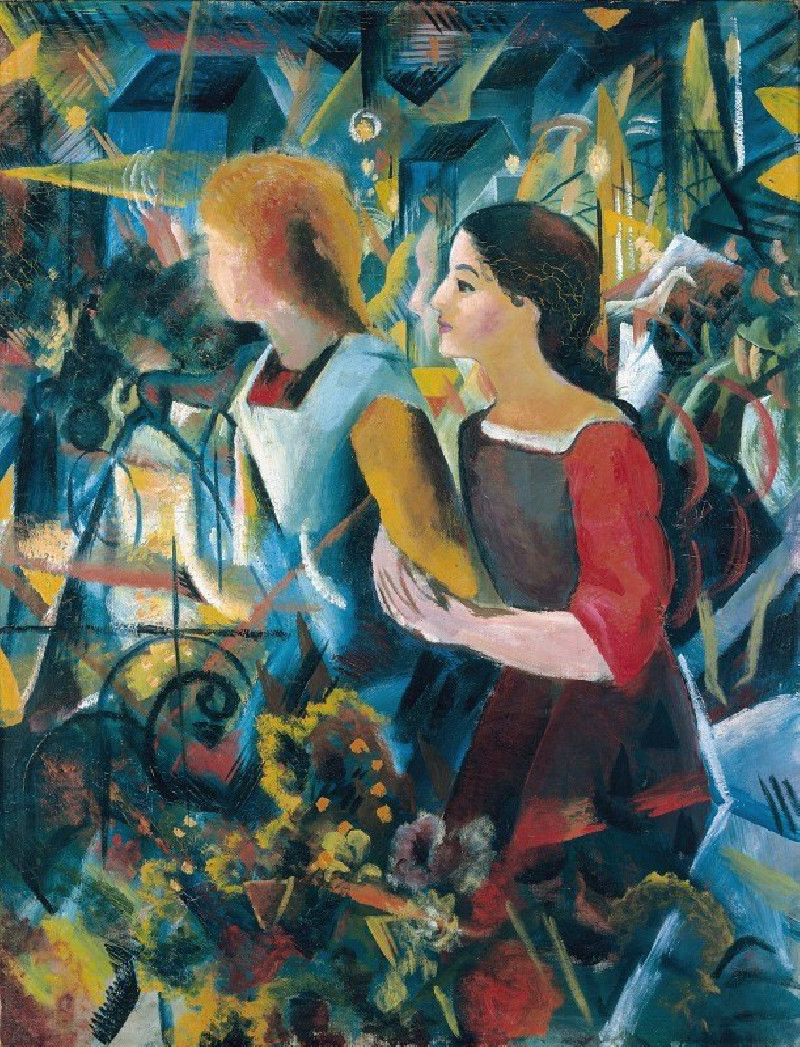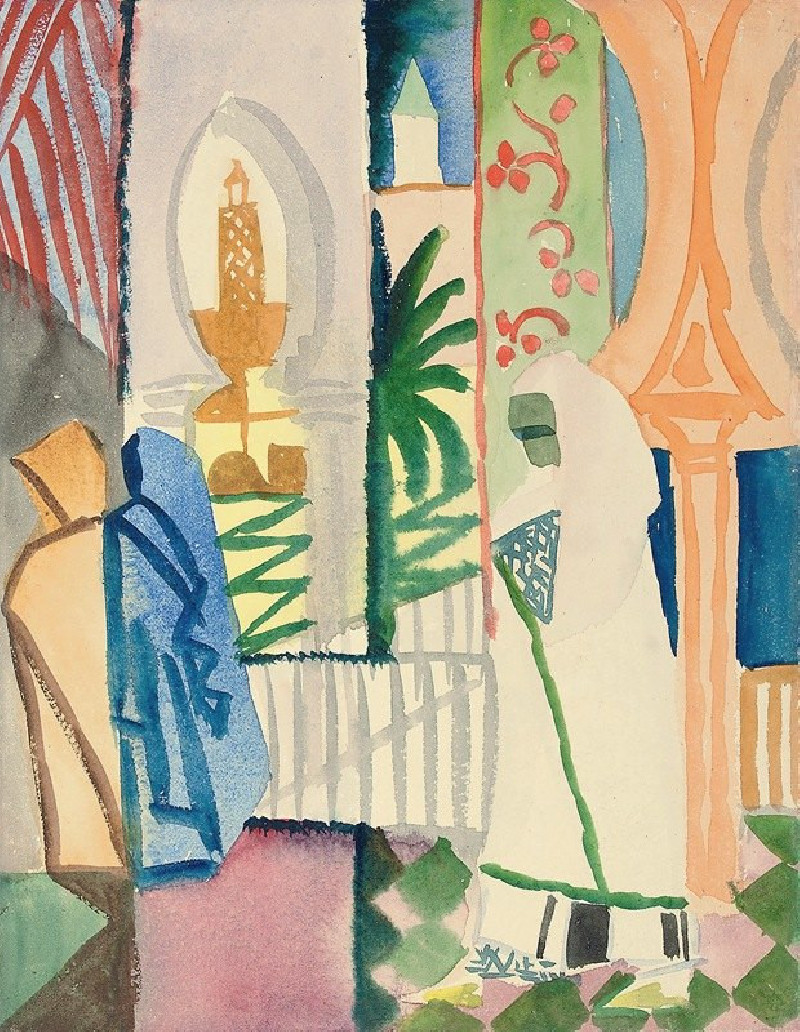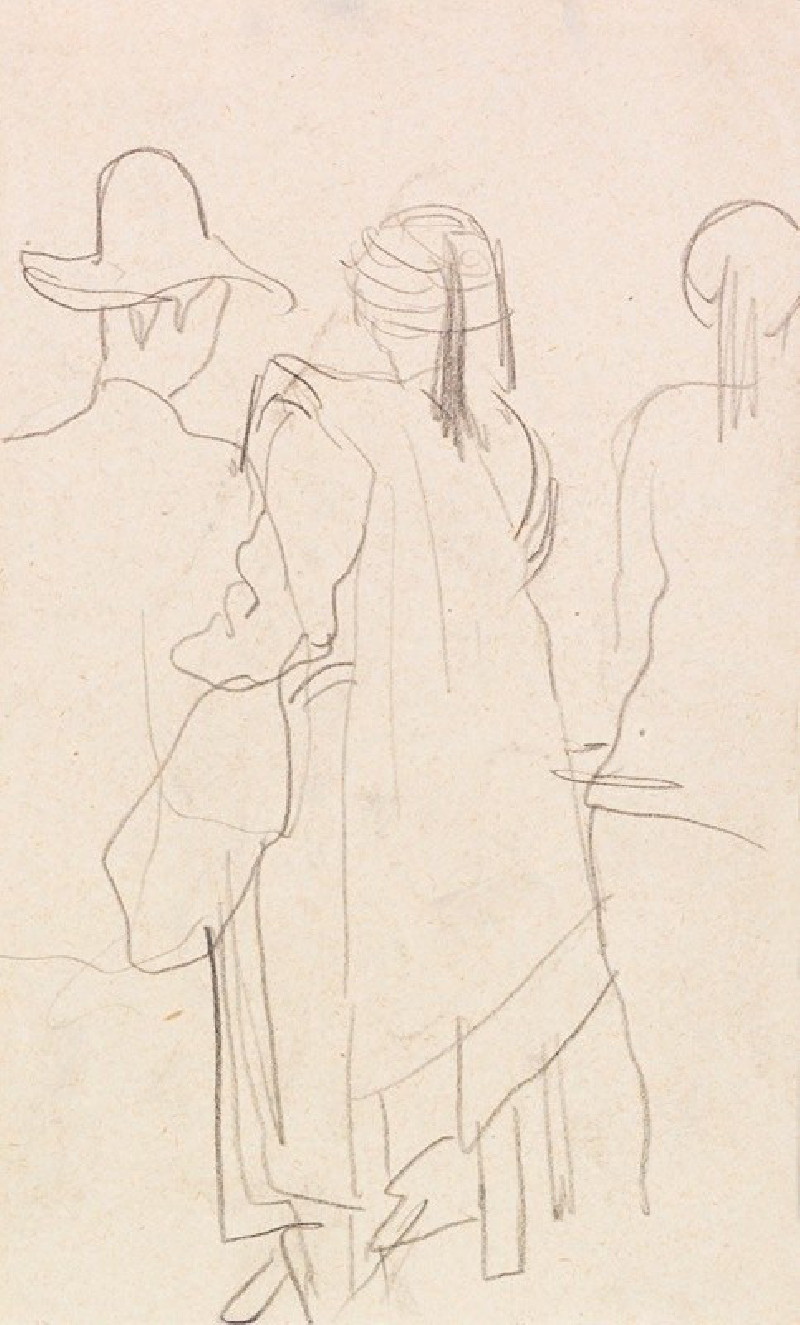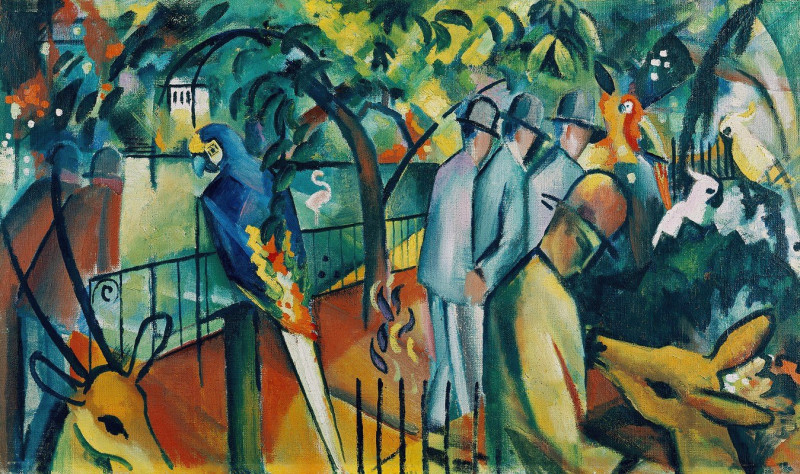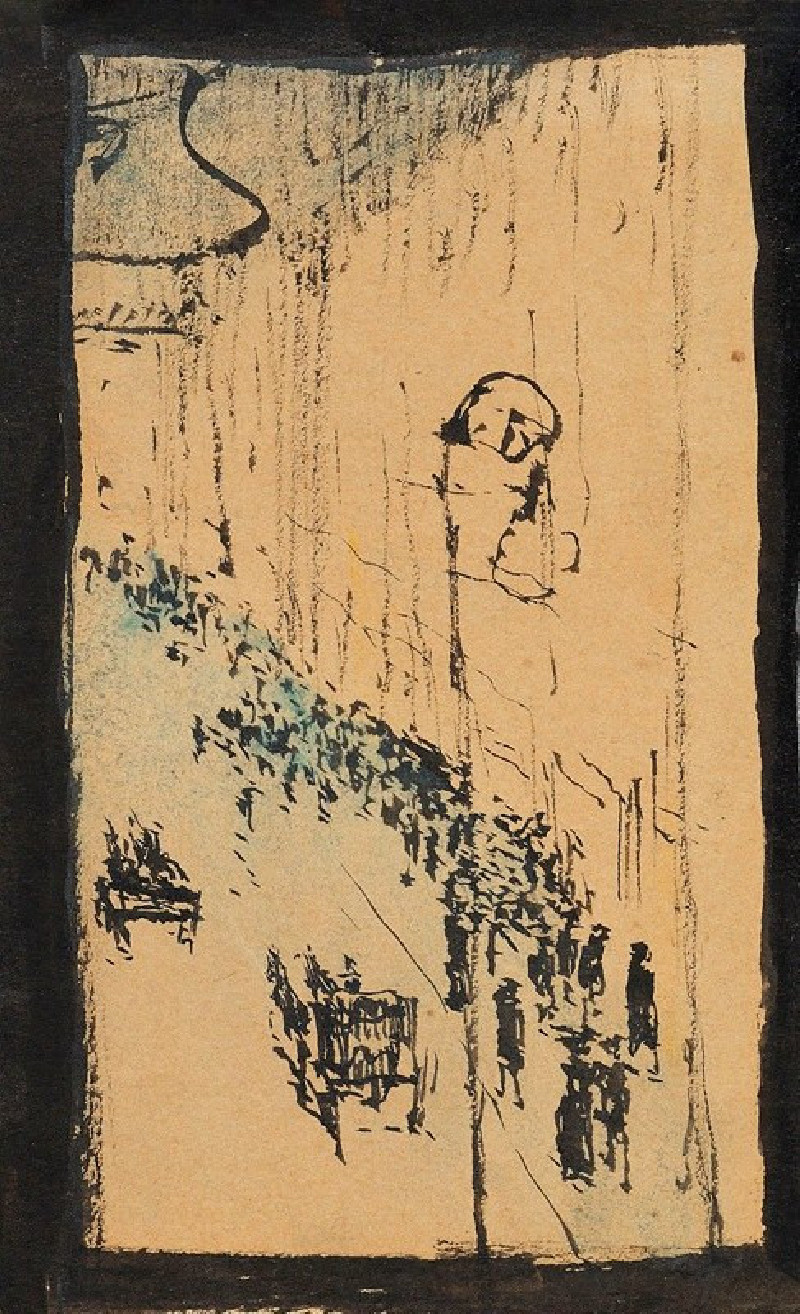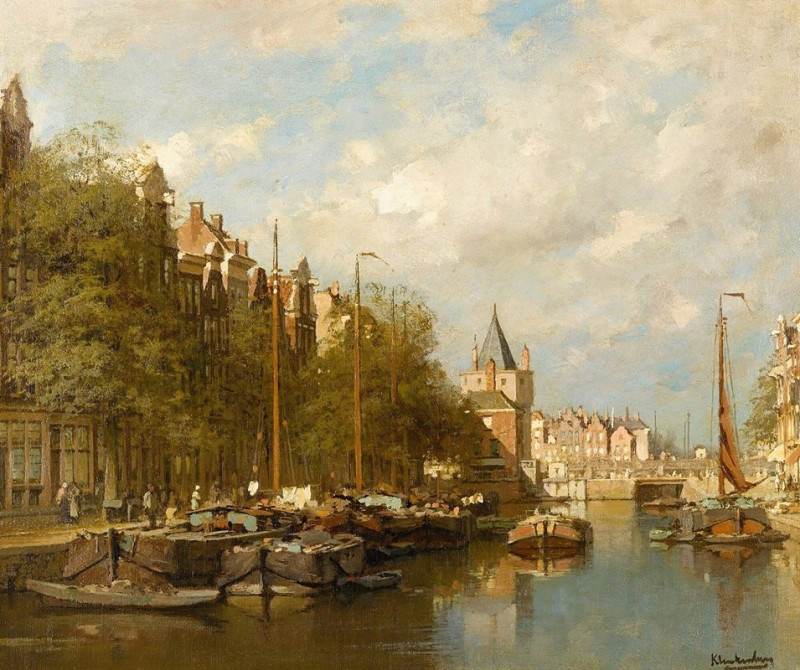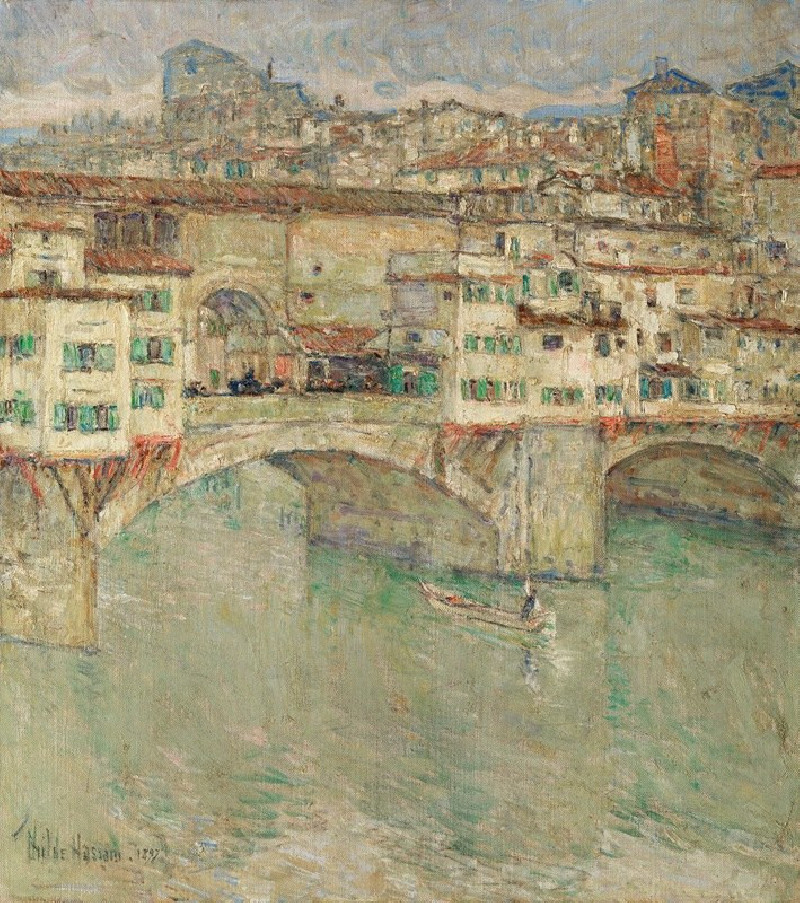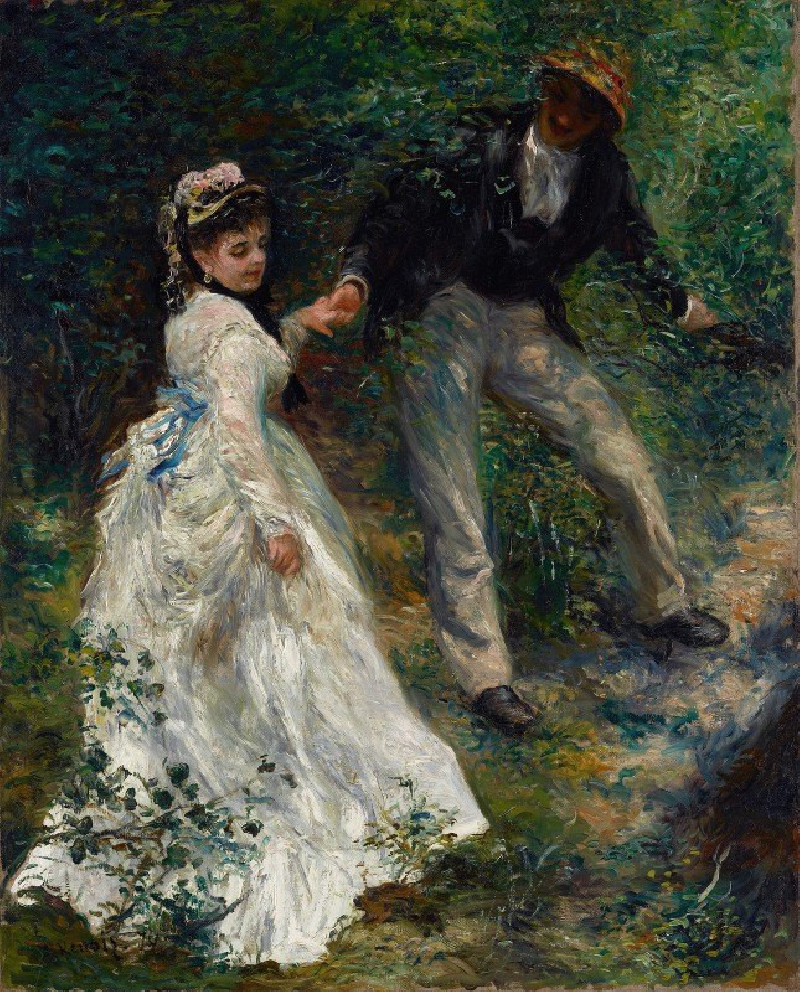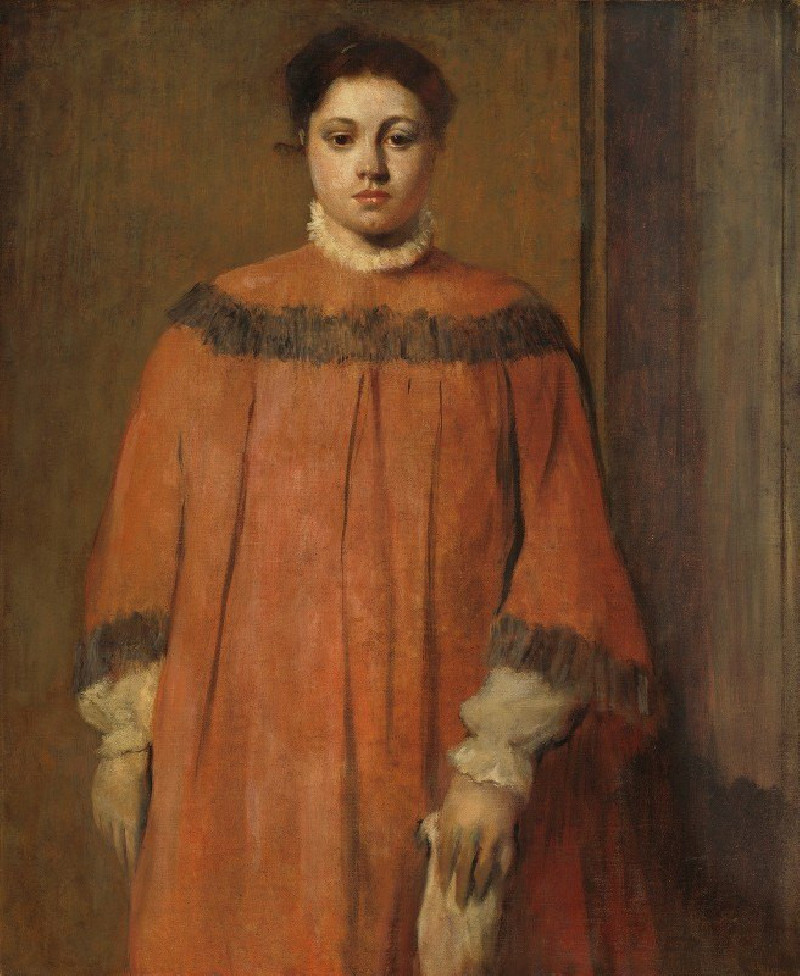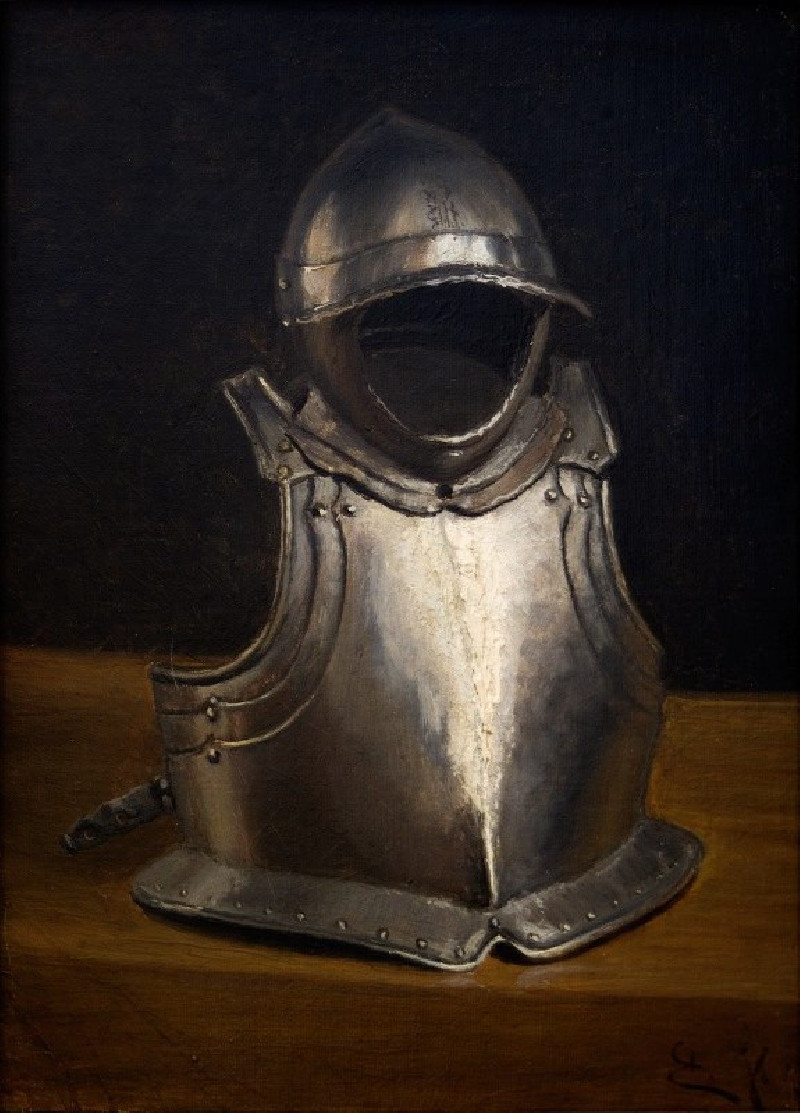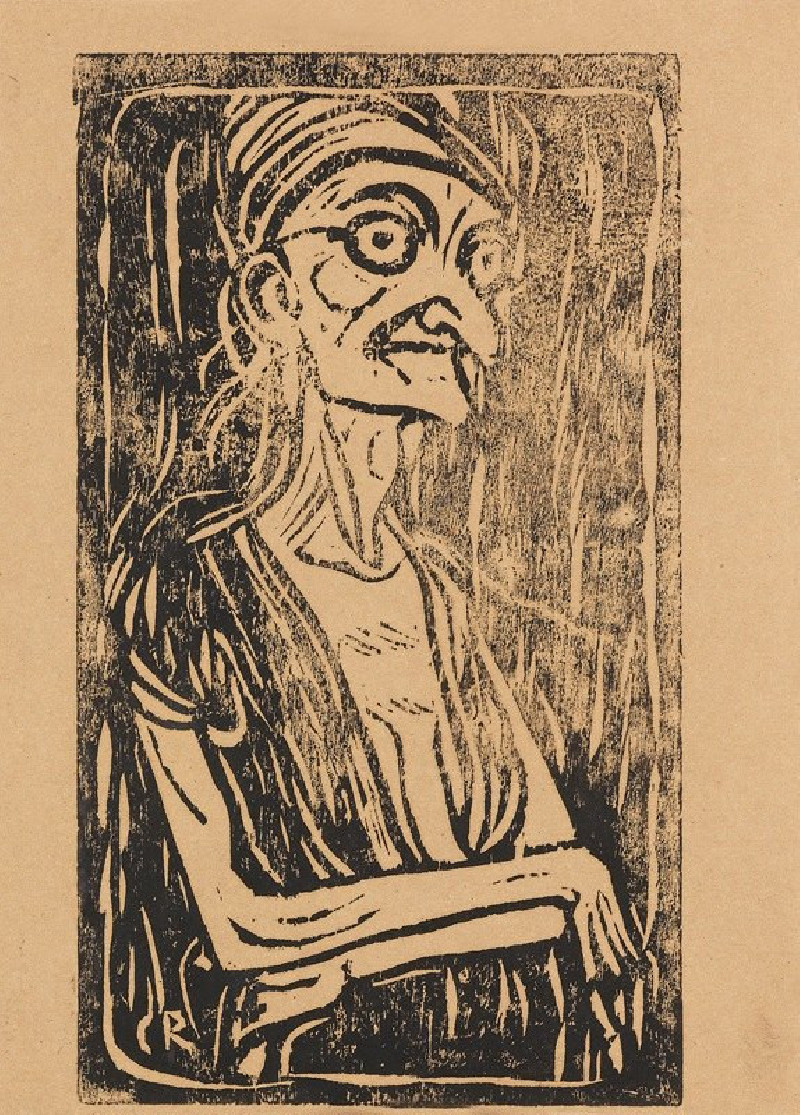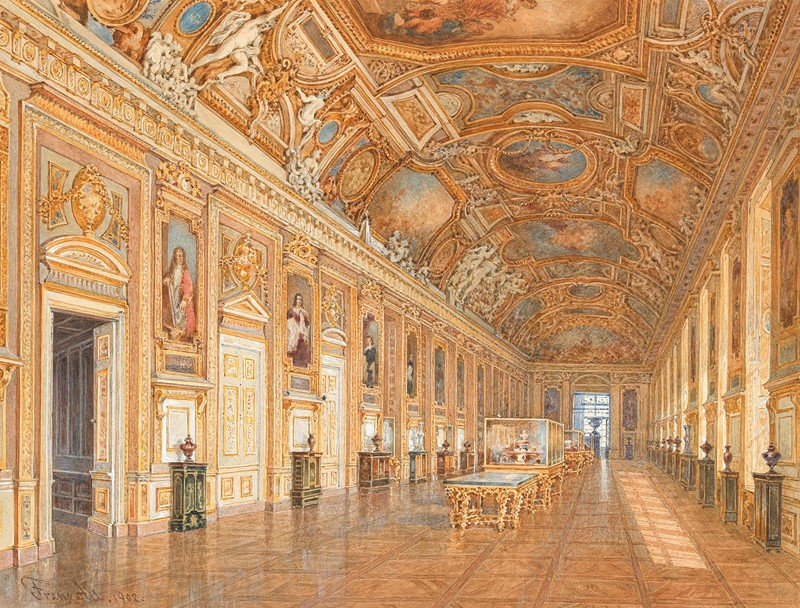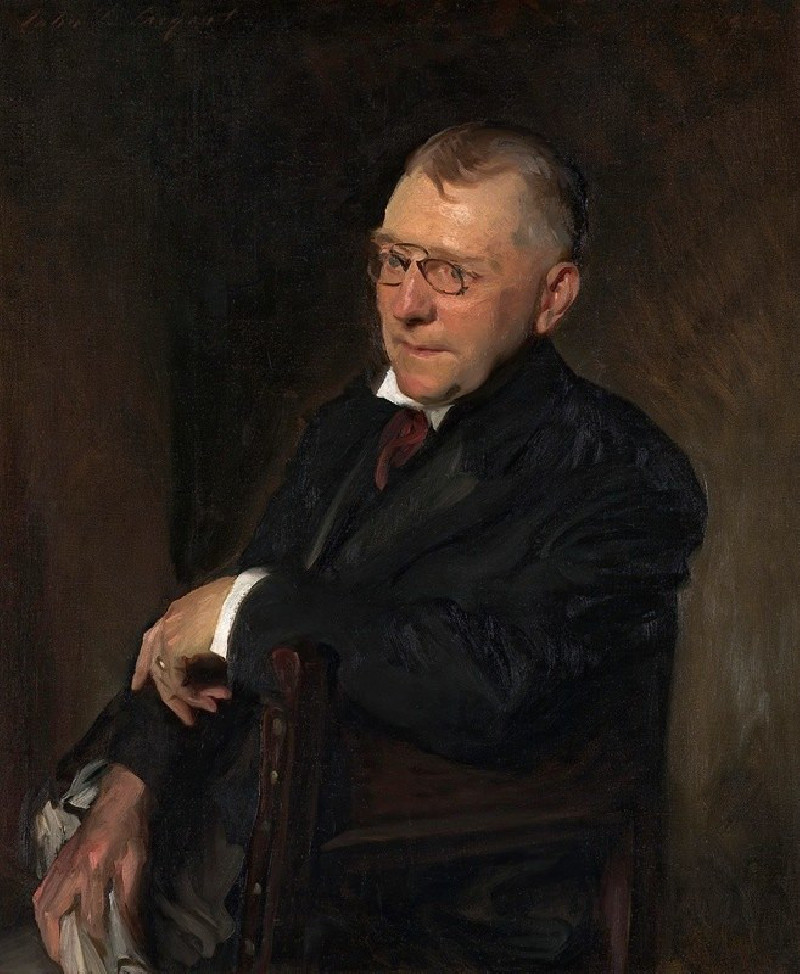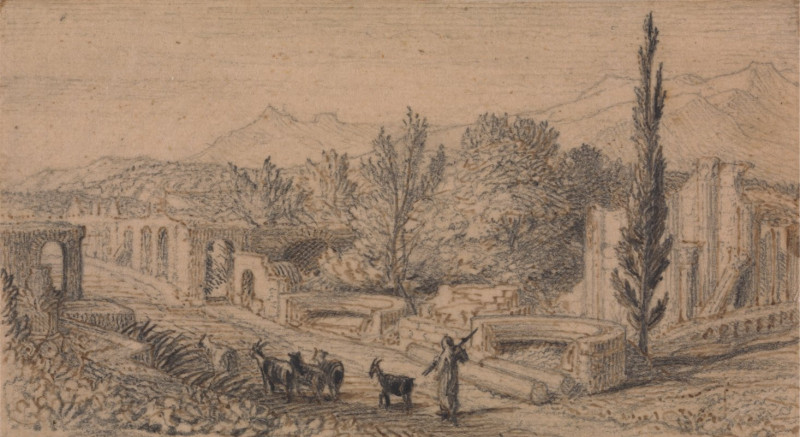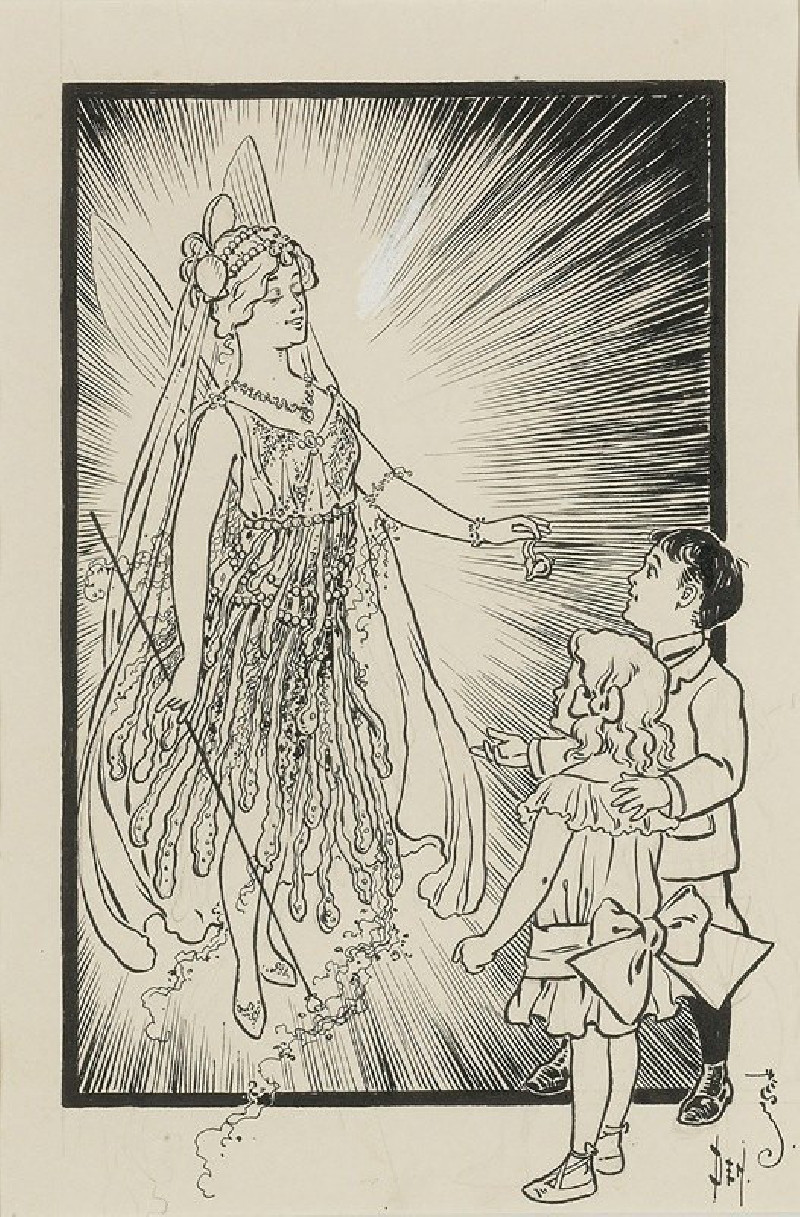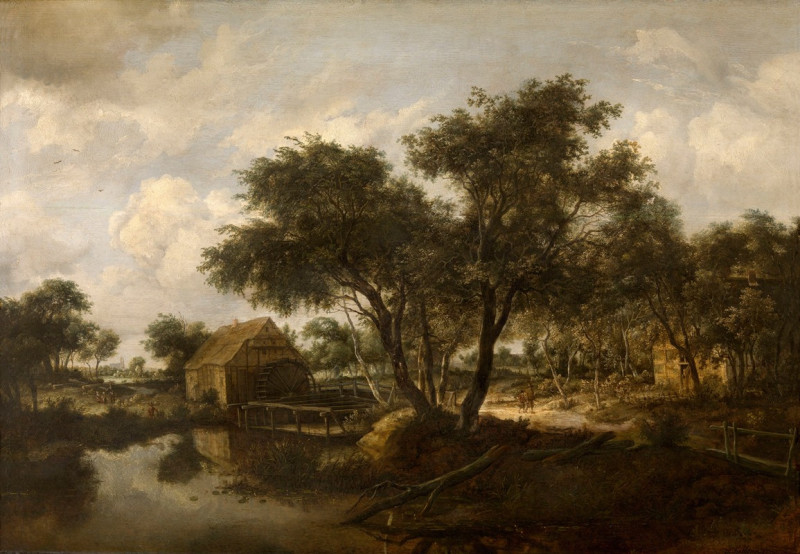Three Girls in a Barque (1912)
Technique: Giclée quality print
Recommended by our customers
More about this artwork
August Macke, a master of Expressionism, captures a vivid and whimsical moment in "Three Girls in a Barque." This painting, a riot of color and dynamic forms, presents an intriguing scene of leisure and nature intertwined in an almost dreamlike tableau.Centered in the composition is a boat gently cradling three figures, presumably girls, defined by Macke's fluid, expressive lines. The figures are portrayed with minimal detailing, abstracted in form, allowing their nudity to blend seamlessly with the natural elements surrounding them. One might say, they symbolize innocence or a return to nature's embrace. To their right, a standing figure holds a pole, perhaps navigating or steadying the barque, his sharp, angular form and vivid red attire providing a striking contrast to the fluidity and soft colors of the seated figures.The background and foreground are a lush display of Macke’s distinctive use of color. The water swirls around the boat, painted in deep blues and greens, speckled with white, suggesting the gentle lapping of water against the boat. The flora appears almost tropical, with wild, untamed strokes of green and hints of otherworldly shapes, emphasizing the painting’s sense of escape from the mundane to a fantastical, serene environment. Overhead, a surreal sky dances with hues of blue and the abstract shapes of clouds or stars, adding to the overall dreamy and ethereal atmosphere."Three Girls in a Barque" not only speaks volumes about Macke's technical ability to manipulate color and form to evoke emotion but also invites viewers to lose themselves in a moment of peaceful reverie, away from the constraints of reality.
Delivery
Returns
August Macke (3 January 1887 – 26 September 1914) was a German Expressionist painter. He was one of the leading members of the German Expressionist group Der Blaue Reiter (The Blue Rider). He lived during a particularly innovative time for German art: he saw the development of the main German Expressionist movements as well as the arrival of the successive avant-garde movements which were forming in the rest of Europe. Like a true artist of his time, Macke knew how to integrate into his painting the elements of the avant-garde which most interested him.

